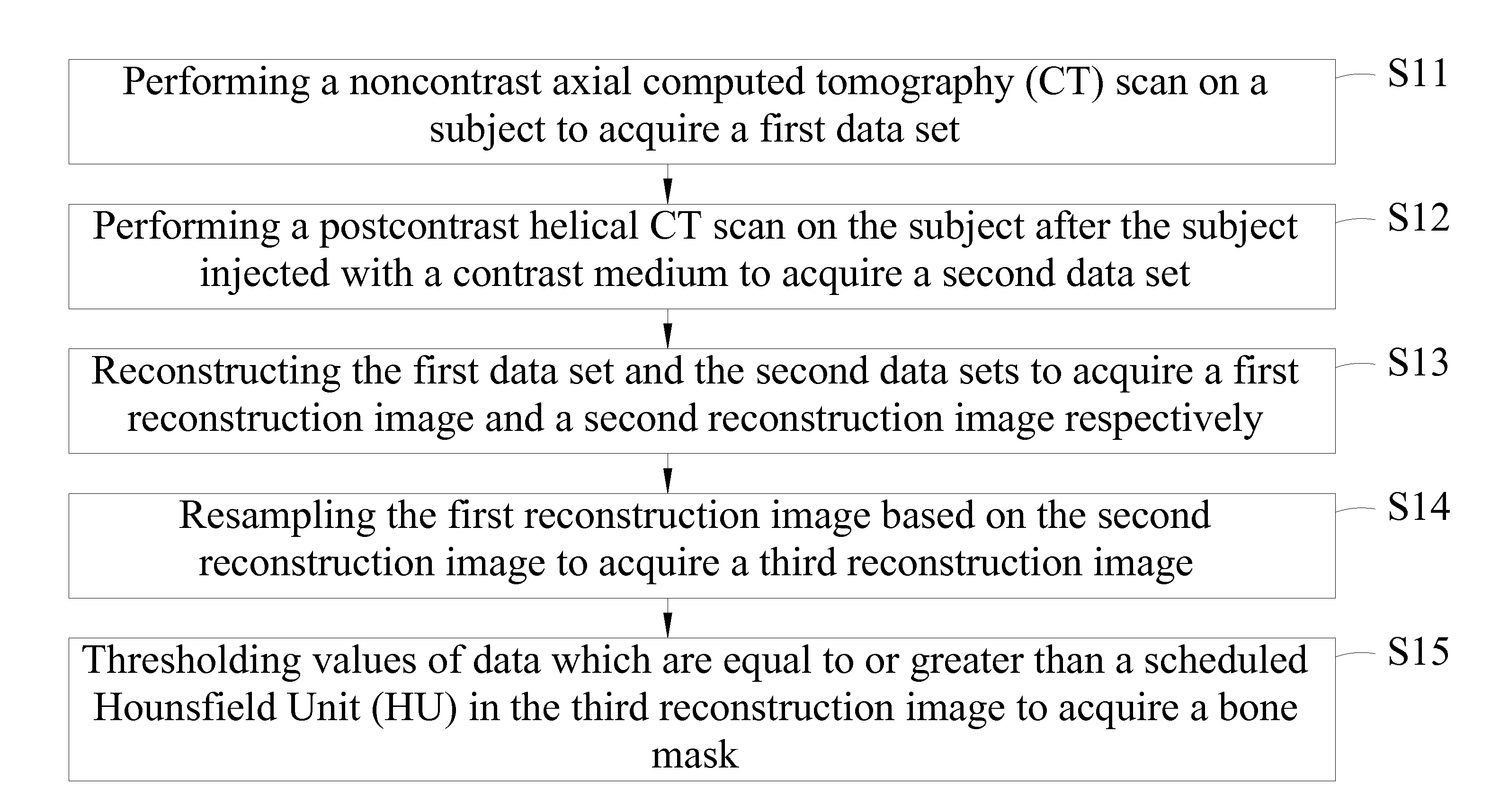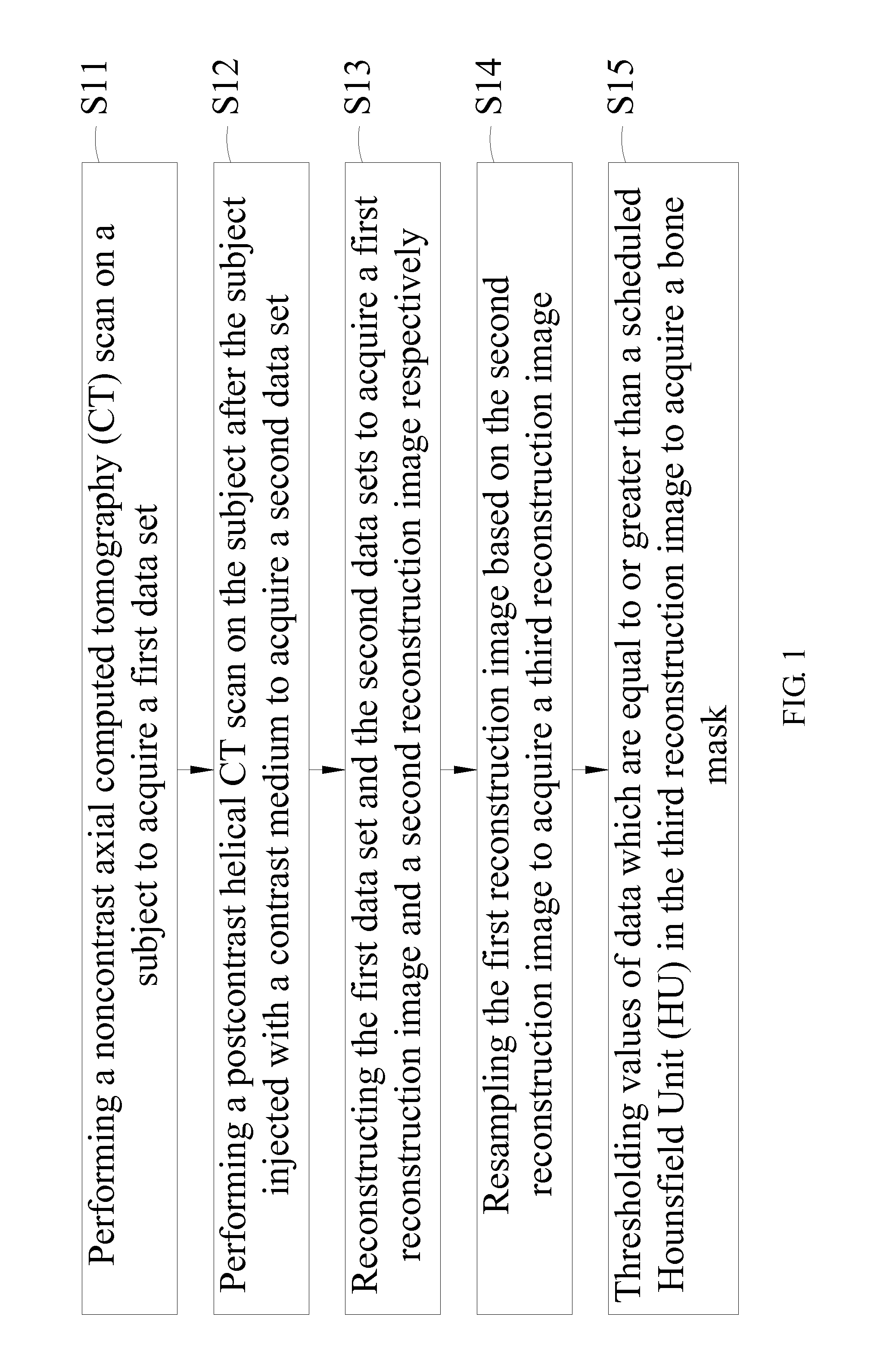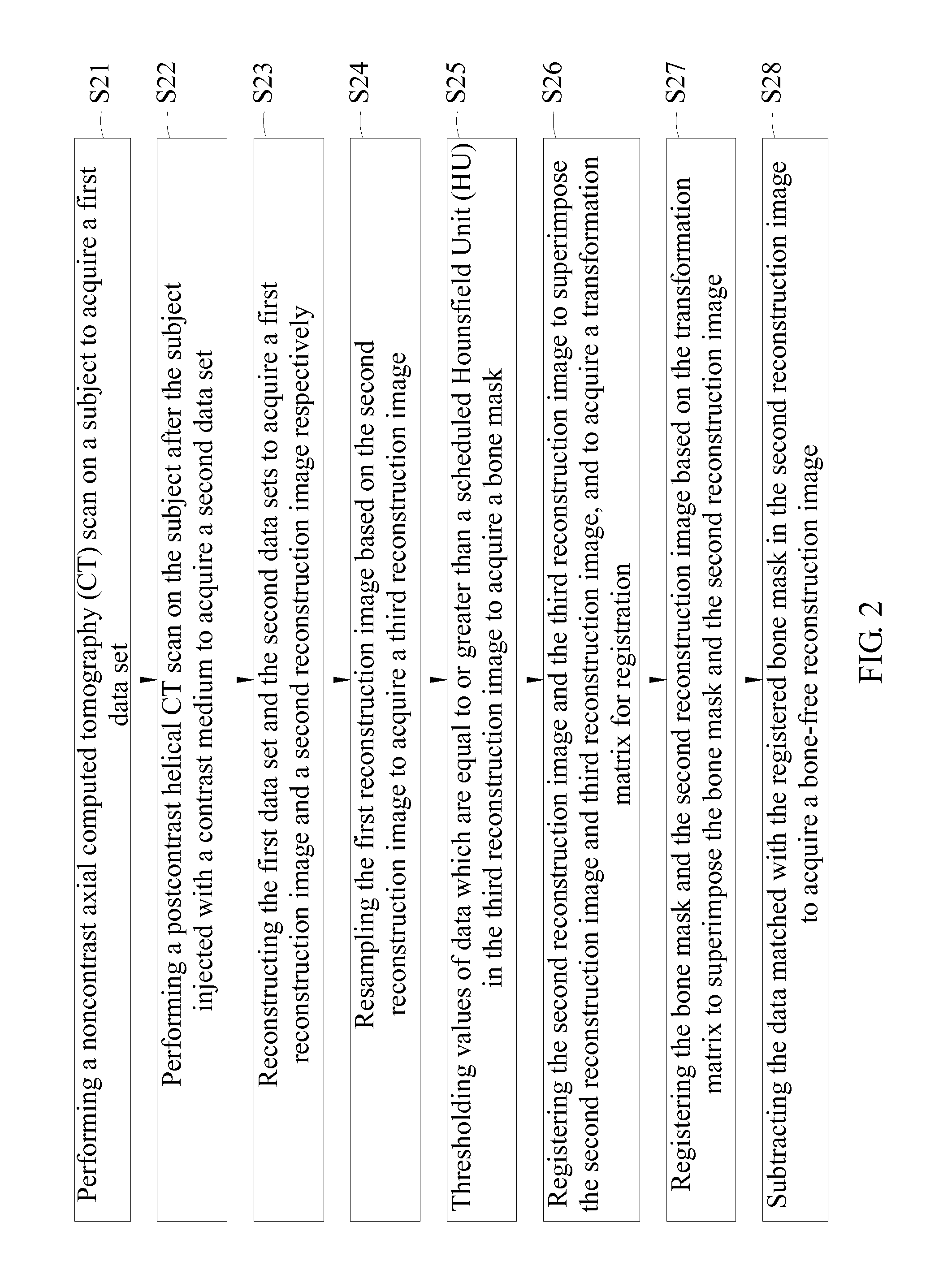Method for Generating Bone Mask
a bone mask and computed tomography technology, applied in the field of computed tomography (ct) scans, can solve the problems of affecting the accuracy of bone masks, and affecting the diagnosis accuracy of computed tomography angiography, so as to achieve better and clearer image quality, reduce computational artifacts, and improve the effect of defining the range of bone masks
- Summary
- Abstract
- Description
- Claims
- Application Information
AI Technical Summary
Benefits of technology
Problems solved by technology
Method used
Image
Examples
first embodiment
[0031]Please refer to FIG. 1, it is a flowchart of the present invention. As indicated by step S11 in the figure, a first data set is acquired by performing a noncontrast (nonenhanced) axial computed tomography (CT) scan on a subject. As indicated by step S12, a second data set is acquired by performing a postcontrast helical CT scan on the subject after the subject injected with a contrast medium. The contrast medium comprises an iodinated contrast medium. As indicated by the step S13, the first data set and the second data set are reconstructed to acquire a first reconstruction image and a second reconstruction image respectively, in which the second reconstruction image possesses a predetermined spatial resolution. The predetermined spatial resolution may be defined by the predetermined pixel size, by the slice thickness and by the pattern corresponding to the pixel. Once reconstructed, the reconstruction images reveal internal features of a patient. As indicated by step S14, a t...
second embodiment
[0032]Please refer to FIG. 2, it is a flowchart of the present invention. As shown in the figure, in the step S21, a first data set is acquired by performing a noncontrast axial computed tomography (CT) scan on a subject. In the step S22, a second data set is acquired by performing a postcontrast helical CT scan on the subject after the subject injected with a contrast medium. As indicated by the step S23, the first data set and the second data set are reconstructed to acquire a first reconstruction image and a second reconstruction image respectively, in which the second reconstruction image possesses a predetermined spatial resolution. As indicated by the step S24, a third reconstruction image is acquired by resampling the first reconstruction image based on the second reconstruction image, such that the third reconstruction image matches the predetermined spatial resolution of the second reconstruction image. As indicated by the step S25, a bone mask is generated by thresholding ...
third embodiment
[0033]Please refer to FIG. 3, it is a flowchart of the present invention. As indicated by step S31 in the figure, a first data set is acquired by performing a noncontrast axial computed tomography (CT) scan on a subject. In the step S32, a second data set is acquired by performing a postcontrast helical CT scan on the subject after the subject injected with a contrast medium. As indicated by the step S33, the first data set and the second data set are reconstructed to acquire a first reconstruction image and a second reconstruction image respectively, in which the second reconstruction image possesses a predetermined spatial resolution. In the step S34, a third reconstruction image is acquired by resampling the first reconstruction image based on the second reconstruction image, such that the third reconstruction image matches the predetermined spatial resolution of the second reconstruction image. As indicated by the step S35, a bone mask is generated by thresholding values of data...
PUM
 Login to View More
Login to View More Abstract
Description
Claims
Application Information
 Login to View More
Login to View More - R&D
- Intellectual Property
- Life Sciences
- Materials
- Tech Scout
- Unparalleled Data Quality
- Higher Quality Content
- 60% Fewer Hallucinations
Browse by: Latest US Patents, China's latest patents, Technical Efficacy Thesaurus, Application Domain, Technology Topic, Popular Technical Reports.
© 2025 PatSnap. All rights reserved.Legal|Privacy policy|Modern Slavery Act Transparency Statement|Sitemap|About US| Contact US: help@patsnap.com



